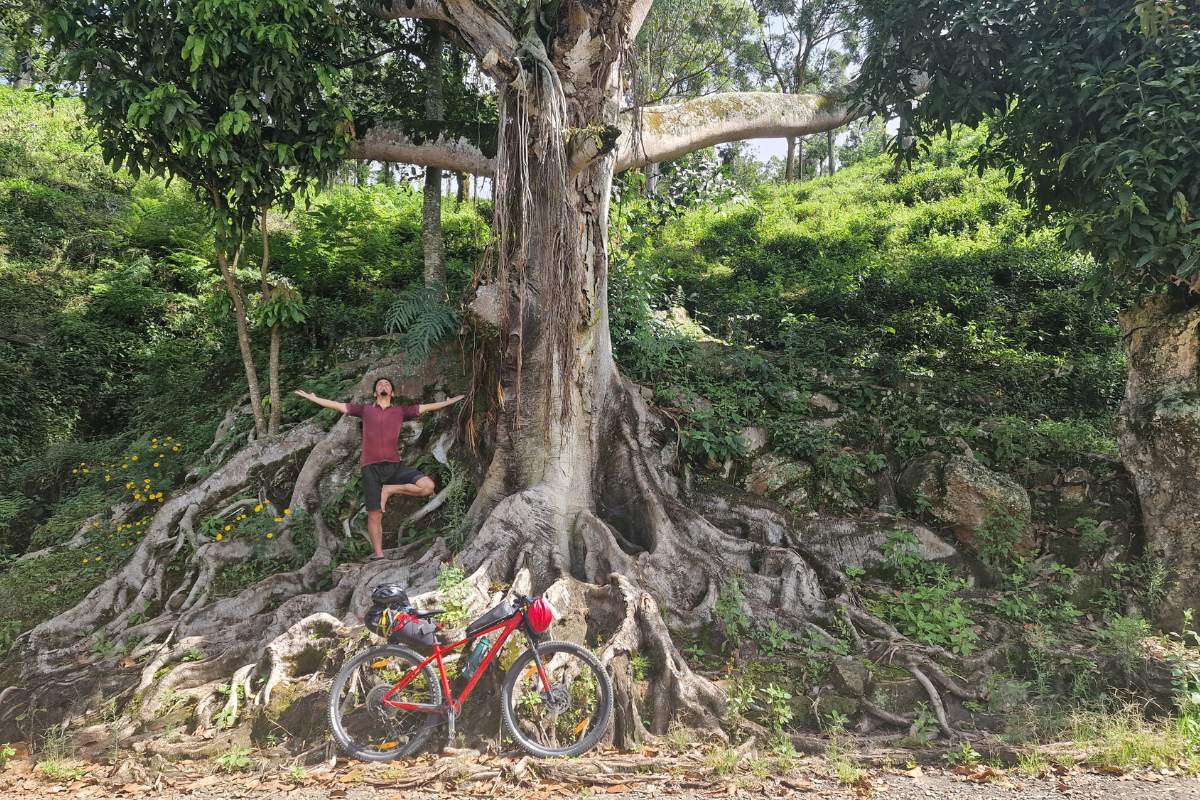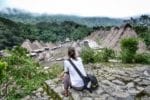Last Updated on 23 August 2024 by Cycloscope
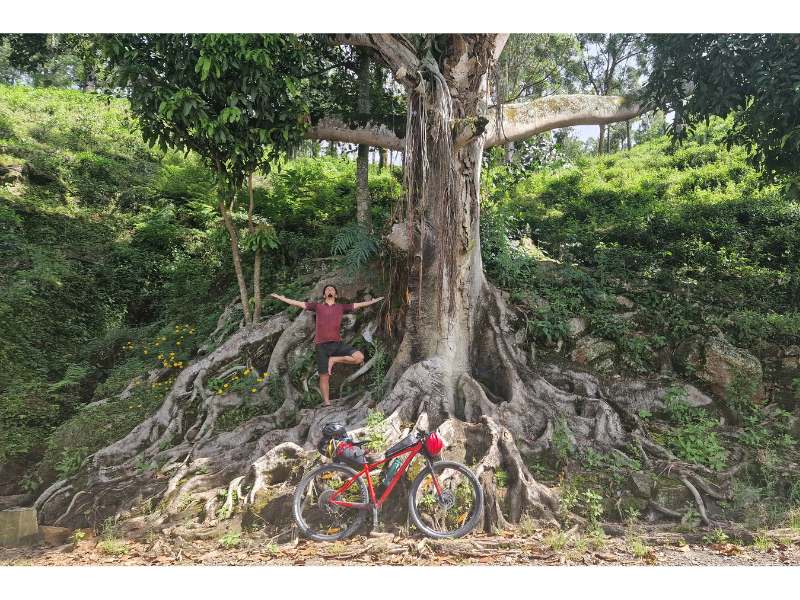
Cycling Sri Lanka, An Easy Bikepacking Destination Out of a Fairy Tale. Our itinerary, set-up, budget, and all the useful information you might need to organize your cycling holiday in Sri Lanka.
Sri Lanka is an easy cycling destination, we cycled the island by ourselves, after buying two second-hand MTB in Colombo, the country’s capital. We had no camping equipment or cooking gear with us: you can find a room for as cheap as 5 USD and it is quite hot and humid, so we decided, for the first time in our 10 years of cycling the world, to go light, and we actually liked it a lot.
In this article, we share our itinerary, set-up, budget, and all the useful information you might need to organize your bikepacking tour of Sri Lanka.
We dodged a lot of famous super touristy places and just enjoyed the beautiful small roads that looked out of a fairy tale. Although the rainforest is very small compared to the past, Sri Lanka is probably the greenest country we have visited.
Bikepacking Sri Lanka
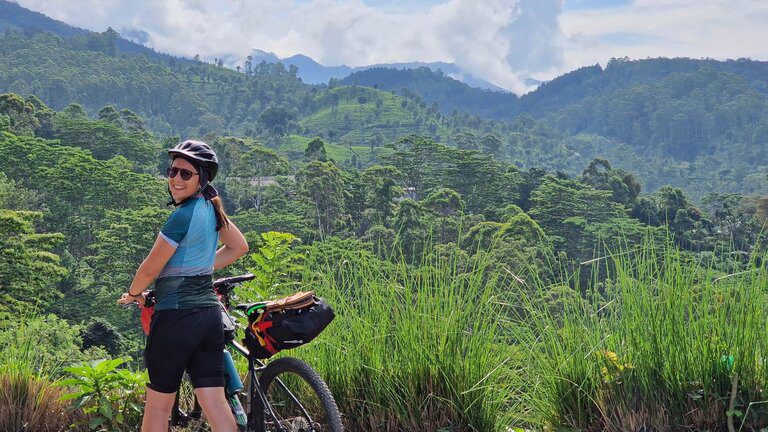
Sri Lanka is a rather easy island to cycle, it is very suitable for both beginners and more experienced cyclists. We can say that the only requirement is a decent physical shape and a certain heat tolerance.
If you cycle along the coast the road is basically flat but we highly suggest you visit the interior, rich in tea plantations, green forests, temples, and much cooler nights.
We only found traffic from Colombo to Galle, and nothing extreme anyway. Inland it is easier to find small alternative streets or secondary roads with very little traffic.
Table of Contents
Important Tips and Info
- Do not take pictures giving your back to a Buddha statue.
- Apparently, you can get arrested if you have any kind of body art displaying an image of the Buddha, we cannot confirm if this is true.
- Looks like the 10% charge in restaurants and bars goes to the owner rather than the worker, if you want to give a tip to someone specifically better to hand the money directly to them.
- Sunscreen is not easy to find. We use the zinc protection + 50 used by the surfer. We like it because is waterproof and doesn’t melt into your eyes with your sweat.
- Withdrawing money from an international card is very expensive. At the time we are writing this guide (2023), it is not possible to convert your money into Sri Lankan rupees with a multicurrency account such as Wise or Revolut.
What to Bring for a Bike Trip in Sri Lanka
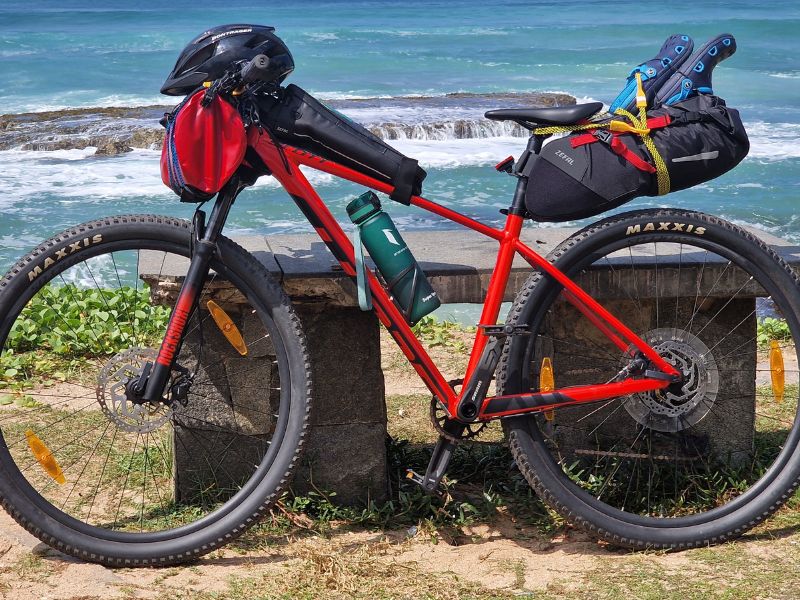
If you decide, like us, to leave your camping equipment at home you can really travel light.
If you want a complete packing list, have a look at our Bikepacking Gear List article and/or our Essential Gear for Cycle Touring.
If you don’t wanna click further, just add to your standard kit:
- Sun cream 50+
- A good rain jacket or poncho
- Mosquito repellant
- Long trousers + T-shirt to visit religious sites
- A pair of socks for the mountains
What budget for a cycle touring trip in Sri Lanka?
As we mention in all of our cycle touring guides, the budget for a bikepacking trip varies greatly according to the needs, wants, and availabilities of the cyclist.
If you’re planning for a totally self-supported bikepacking trip in Sri Lanka – wild camping and cooking – then you could easily make it with a budget of less than 10$ per day, which will be spent on groceries and teas/coffees for your breaks. If you don’t care about hot drinks, even 5$ per day would do.
If you want to have a roof above your head every night, and a cooked meal per day, a realistic budget would be 20/25$ x day.
The best period to visit Sri Lanka
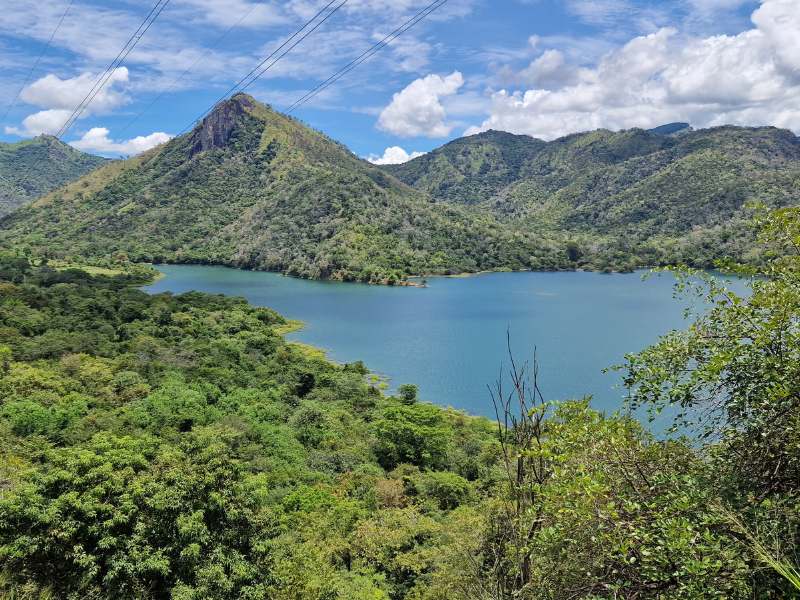
We cycled Sri Lanka between the second half of April and mid-May. The temperature is fixed at 30/32 degrees during the day and 25/27 at night; in short, it’s always quite hot. Leaving early in the morning, around 6 or so, as the sun comes up, you will have several quieter hours, say until 11 am.
Along the coast, from noon to 2 or 3 pm, we suggest you have a break for lunch or just rest in the shade. At the beginning of May was raining quite often, every afternoon in the interior while the coast was still manageable.
April is also the New Year Month, the Tamil New Year, celebrated in many South East Asian Countries. Maybe because of the economic situation, we haven’t seen any big celebrations. Many places, including restaurants and hotels, were closed and alcohol selling was prohibited. May was the month of the lantern festival, and more participated, which we enjoyed in the streets of Colombo.
The Many Festival of Sri Lanka

In Sri Lanka is often a holiday. Every Poya Day (full moon) is a holiday. Especially if it falls on Friday or Monday expect to find trains fully booked and even accommodation in some iconic place. We have to say that we did not have any problem finding a place to sleep, even during the very busy Vesak Poya. Probably, again, because of the economic situation local tourists were around.
In some areas, (and even in Colombo during the New Year holiday or other major celebrations) many places are closed, to our great surprise was difficult to find a restaurant open even tho people were supposed to be on vacation.
During these holidays it is prohibited to sell alcohol, so that might explain why they rather close. We arrived during the Tamil New Year (13th of April) and left after the Vesak Poya at the beginning of May.
Sri Lanka Festival month by month
January: Duruthu Perahera + Thai Pongal
February: Independence Day + Navam Perahera
March: Maha Sivarathri
April: Tamil New Year, Aurudu
May: Vesak Poya
June: Poson Poya
July: Vel + Kataragama
August: Kandy Esala Perahera + Nallur Festival
October: Deepavali
December: Adam’s Peak + Unduvap Pota + Christmas
note: check what is the event about if you do not want to see chained elephants parading around. They are also kept prisoners in many temples, for example, the famous tooth temple in Kandy.
Roads and Drivers in Sri Lanka
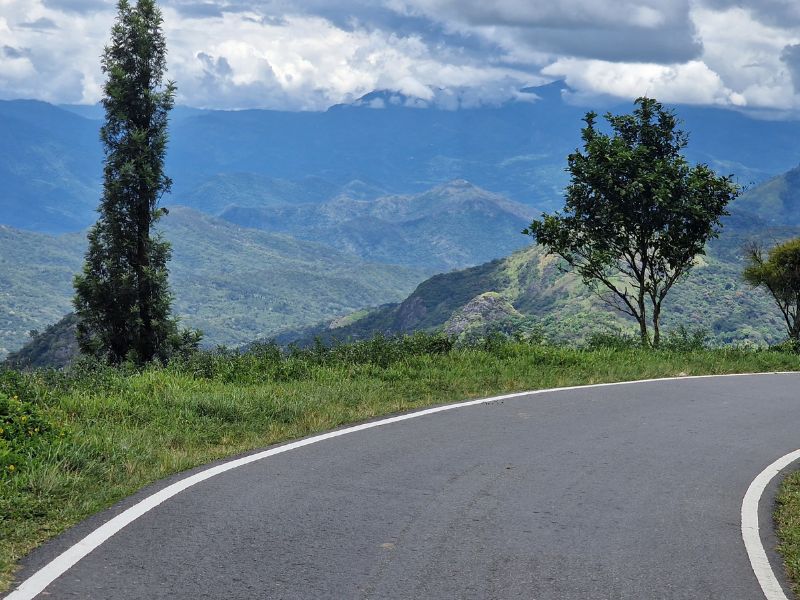
Roads in Sri Lanka are fantastic and drivers are quite respectful in our experience, you almost always have an alternative to the main road; small tar roads with no traffic, running through the forest or nice rice paddies, and fairly villages and waterfalls.
Trust Komoot or a similar app to take you there, but remember not to take the path in the forest where you see a lot of wet leaves on the ground, you will probably get assaulted by leeches, not pleasant (we talk for experience). If it happens to you, apply salt and they will detach without risk of infection (do not scream and remove them by force as we did).
Public Transport + Bicycles in Sri Lanka
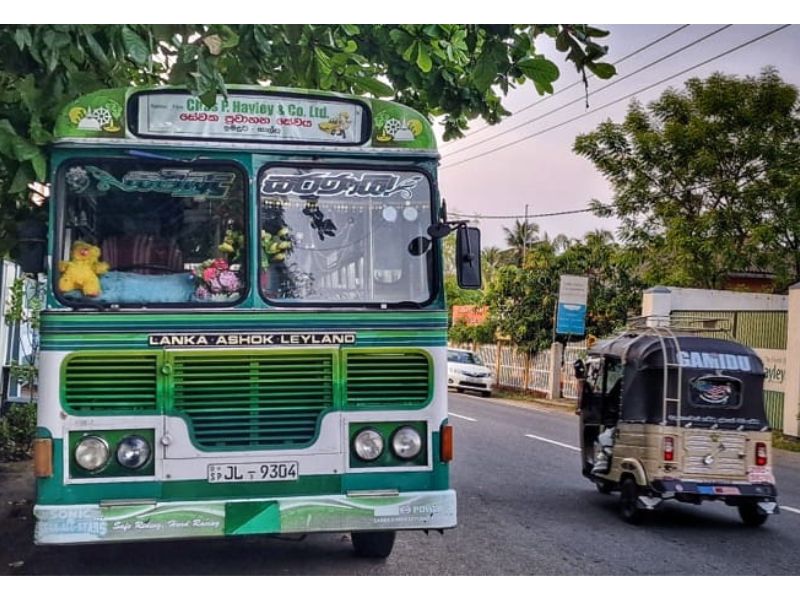
We can safely say that Sri Lanka’s public transport system is one of the best we have seen out of the approximately 50 countries we have traveled through so far.
You will meet buses on every road, even on the very narrow streets through the forest.
Bus
Most of the time they have a luggage carrier on the roof, where you can ask to put your bicycle (we haven’t tried so we can’t guarantee they will take good care of it) but we took a bus to go visit Adam’s Peak (you can avoid it) and we really had to hold onto the seat not to fly around, so I cannot imagine my bike there on the roof. Of course, on more straightforward roads the experience is much better, both for you and the bicycle.
Tuk Tuk
What we tried is the bicycles on the tuk-tuk. The hotel we were going to (the Backyard Balangoda, a wonderful place immersed in a tea plantation) offered to send someone to pick us up under torrential rain that would not stop since the morning.
Two tuk tuk arrived, one of them took our bikes and the other one was for us. We paid 2000 Sri Lankan rupees in total for 5 km uphill + the dirt road to the hotel.
Taxi + Useful Apps
Of course, you can always opt for a private taxi. There are 2 main apps used to book a car. We used kangoroo to go to the airport with our bicycle boxes and it worked very well. We booked a 9 seater and easily fit our boxes, we paid around 6000 Sri Lankan rupees from Colombo to the airport (around 35 km).
Useful Apps
- Pick Me (also food delivery)
- Kangoroo taxi
Train
Srilankan trains are very famous, their itinerary is often scenic. Unfortunately is not possible to take your bicycle on the commuting train, as far as we know you can put it on the mail train. In general, the duration of the trip by train is double compared to the same itinerary on a bus.
The most beautiful train rides to the British colonial heritage town of Nuwara Eliya, with a stop to visit tea plantations and Kandy.
You can check the official website here, for more information and ticket purchasing or check 12go.
Drinkable Water
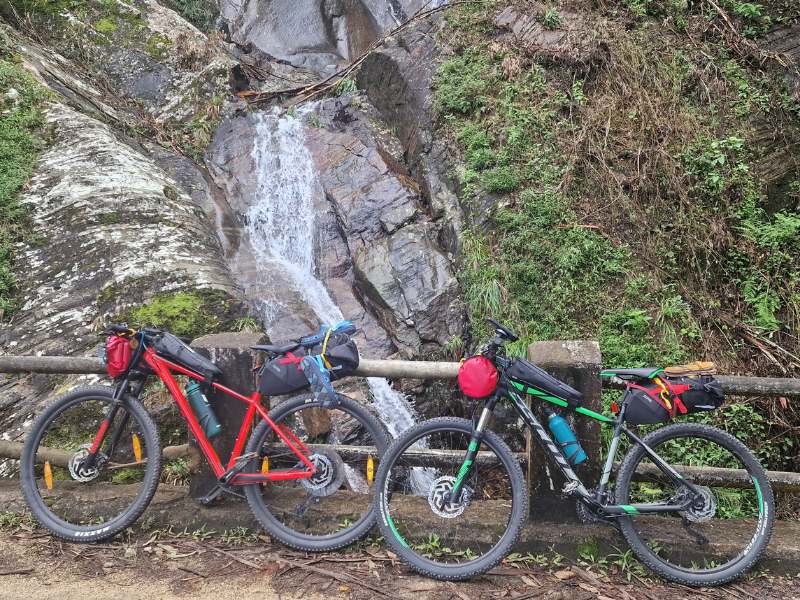
Water in Sri Lanka is generally safe to drink, but in some areas, the micro-organisms it contains can give you some stomach problems. This is, at least, what we’ve read, we personally did not have any issue but if the taste was not so convincing we were just buying a bottle of water (around 130 rupees for 1 Litre).
As an alternative, if you don’t feel comfortable drinking directly from the tap, you can boil the water first or use a portable water filter.
In our experience, the water is generally good but sometimes it has an aftertaste of soil, it is anyway drinkable but you might want to fill it somewhere else if that’s the case.
Food in Sri Lanka
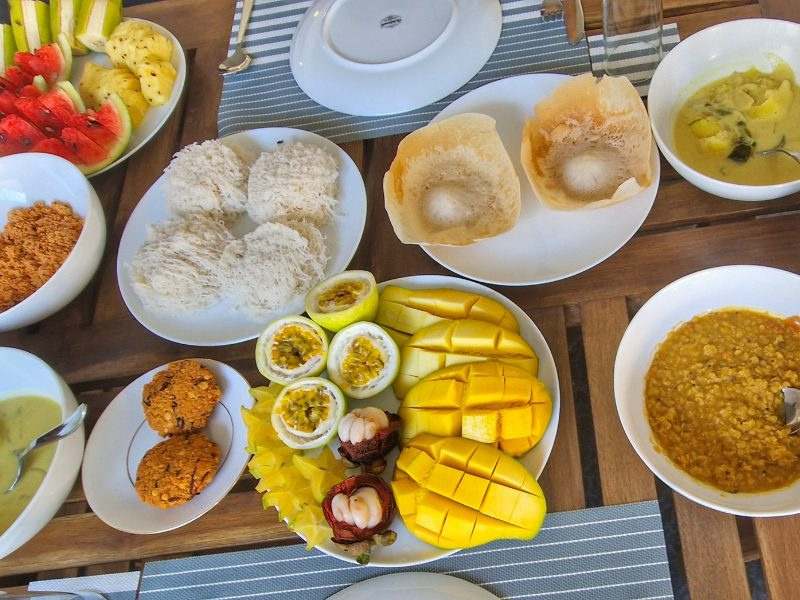
We have to say that, to our taste, the food in Sri Lanka is not the best in Asia. If you are a fan of sambal chilly sauce and rice, it is your place. You’ll find Nasi Goreng and Kottu everywhere, but not much more outside the big centers and the touristic locations.
We liked very much the local breakfast, you must try:
- Appams (egg hoppers),
- Indiappa (string hoppers),
- Kiribath (Milk Rice),
- Pani pol (pancakes)
Most of these breakfast staples are commonly found as street food, together with egg rolls, veggie rolls (sometimes very spicy), samosas, and cowpea fried balls (usually not spicy).
Also very nice are the traditional food courts you’ll find on the road, you can look for them on Google Maps (they look like this). It looks like they are sponsored by the Department of Agriculture and they serve traditional dishes, sweets, and drinks you won’t find anywhere else and at a super cheap price. We liked very much the Jackfruit fried balls.
On our way to the East, we met many buffalo milk curd + honey sellers, delicious. And of course, the seasonal local fruit is always good.
Accommodation in Sri Lanka

Important: remember that in Sri Lanka every simple eatery is called a “hotel”. When you search for accommodation on Google Maps you’ll get a lot of results that are not accurate. Just check the pictures of the place and the mystery will be solved.
That being said, Sri Lanka is a small country and you’ll have no issue finding a place to stay, particularly on the coast. They are usually simple and clean.
For the interior, you might need to check where the accommodations are to plan your day, especially if you plan to take secondary roads, but it was never an issue for us. Indeed we decided to cycle to Sri Lanka without any camping gear.
Accommodations are everywhere, they are affordable and it was honestly too hot to camp. You’ll find rooms from 5 USD to 15/20 USD. They are usually clean and friendly places.
Of course, you can opt for a more expensive stay, we found amazing deals on booking.com, 30 USD is often enough for a big double room with a swimming pool and air conditioning (see the pic above). It is worth checking.
We have not seen proper campsites, or any campsites actually. Sri Lanka is pretty crowded so it might be not so easy to wild camp in most parts of the country (it is not permitted in the National Parks and protected areas). You can always ask the locals where you can pitch your tent, they will help you if it is not a tourist place and there is no guest house around. Sri Lankan is among the most friendly populations we have encountered.
In any case, in Sri Lanka is very easy to encounter snakes and leeches (read the next chapter about it), I’d rather pay some dollars for a room.
Animals of Sri Lanka
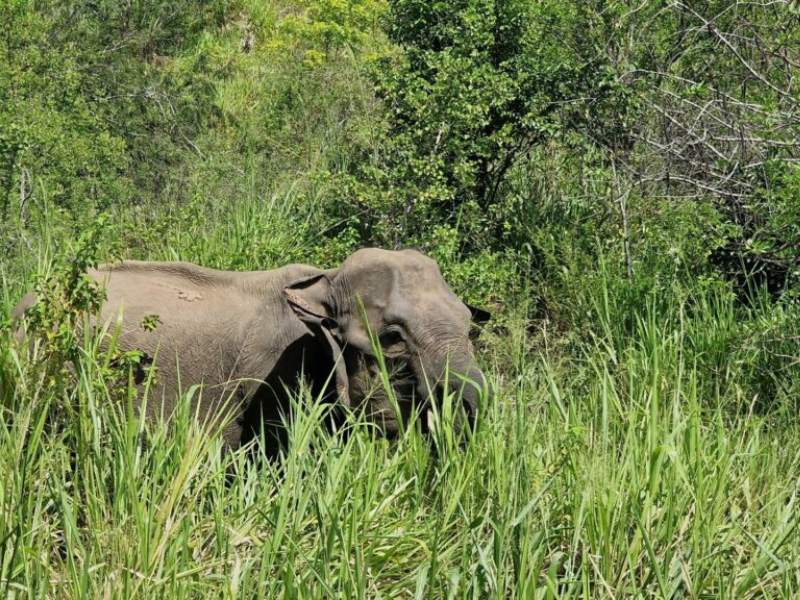
Snakes
Sri Lanka is home to leopards, elephants, sambar deer, and fishing cats, just to name a few. In this article, we’ll talk only about those potentially dangerous to cyclists.
Sri Lanka is not only crowded with people but also with snakes, we met 3 cobras and, probably, a Sri Lankan krait or a similar snake, in only 30 days, and all on the road. There are also a lot of vipers, we did not have the pleasure of meeting any of them. There are more than 80,000 bites, 30,000 envenomings, and 400 deaths due to snakebites every year.
If you decide to wild camp, check very carefully where you pitch your tent, and check your shoes and panniers before leaving. Also, while cycling, it can happen they cross the road; once a cobra crossed the road, we did not see him cause we were going pretty fast downhill, he was scared to be run over and jumped toward Dani. I saw the scene from behind and shouted, likely he did not bite. In our experience they often cross the road during or after the rain, so watch out.
Another less deadly but very annoying animal you’ll find everywhere in the interior is the horrible leech. If you step on some wet leaf on the road, you can be sure you’ll have some guests on your shoes and between your toes. They can cause infections and sometimes transmit diseases. Locals told us to apply a moisturizing cream or Vaseline on your feet as a prevention, it will make your skin slippery and more difficult for them to attach. If they are already attached, they said to apply salt so they will naturally detach.
Street dog overpopulation in Sri Lanka
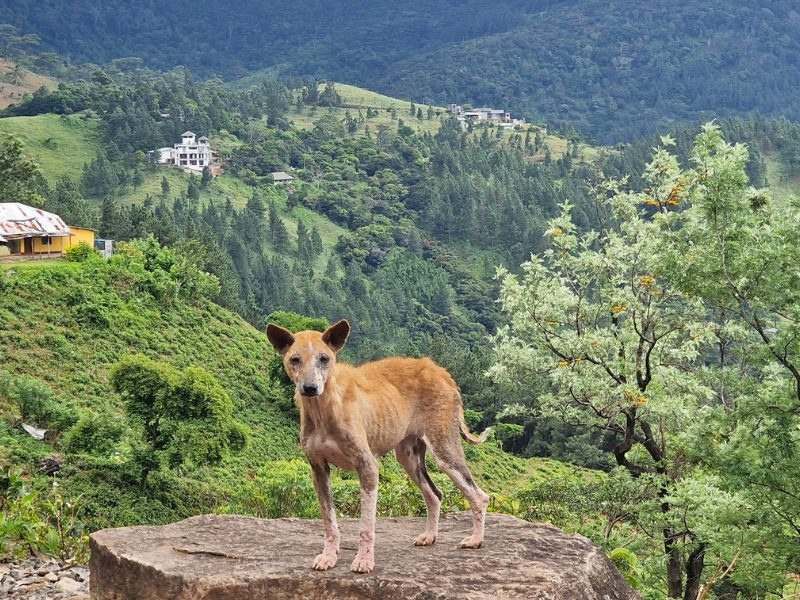
As soon as you arrive in Sri Lanka you’ll immediately realise they have a problem with dogs. They are everywhere, according to some estimates there are about 2 or 3 million straight dogs in the Country.
They are malnourished, or starving, often with no fur, they are very peaceful, and we haven’t had any problems. Probably they are too weak to even think of chasing you.
Of course, most of them are not vaccinated for rabies or other transmissible diseases. If you want to know more about animal welfare and street dog overpopulation in Sri Lanka check this article.
Our Itinerary – Bikepacking Sri Lanka GPX Map
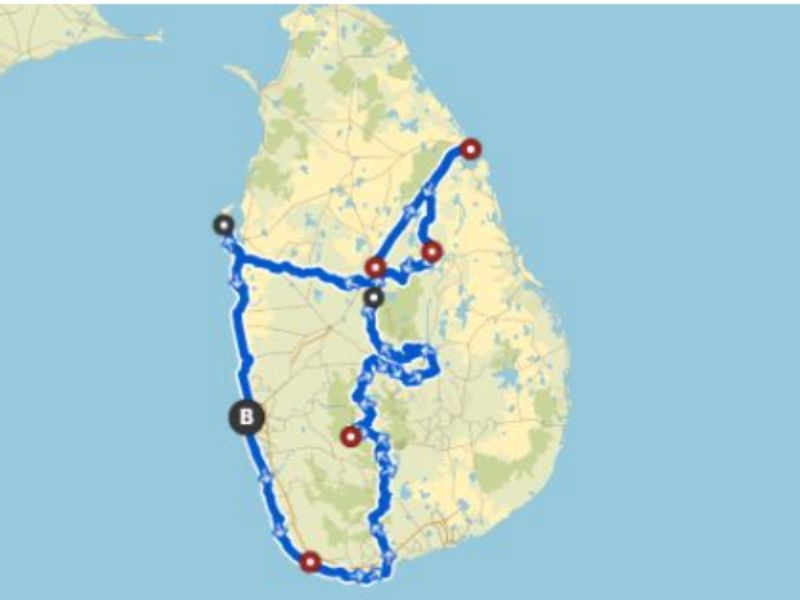
Colombo in one day
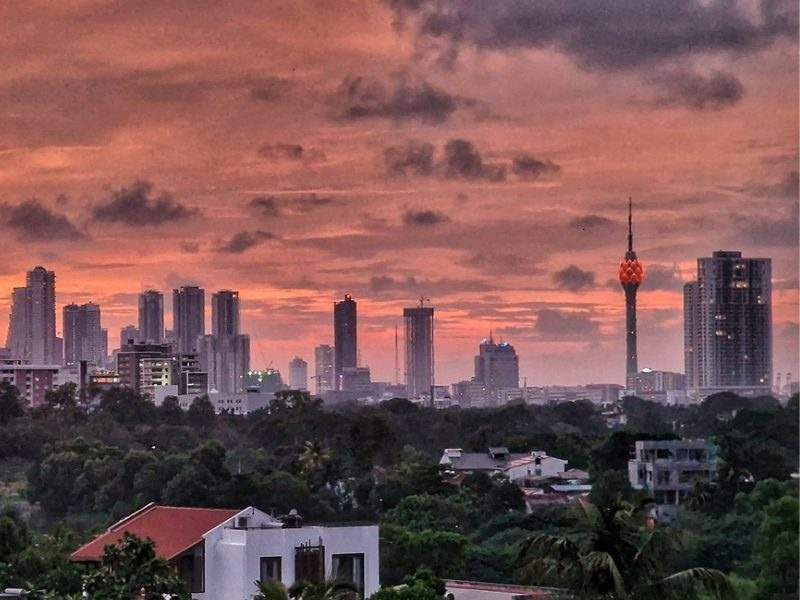
One day is enough to visit the main attractions of the Capital:
- Fort
- Lotus tower
- Old Dutch Hospital
- The eclectic Buddhist Gangaramaya Temple
- Pettah Hindu Temples.
We cycled it all in one day, our hotel was around 5 km from the city center. If your place is downtown you can easily walk around or take a tuk-tuk. You can use Uber (cheaper, maybe even too cheap. Sometimes they cancel the call cause the price given by the app is a loss for them). Most of them have the meter, slightly more expensive but no surprises and no need to bargain.
From Colombo to the South, along the West Coast
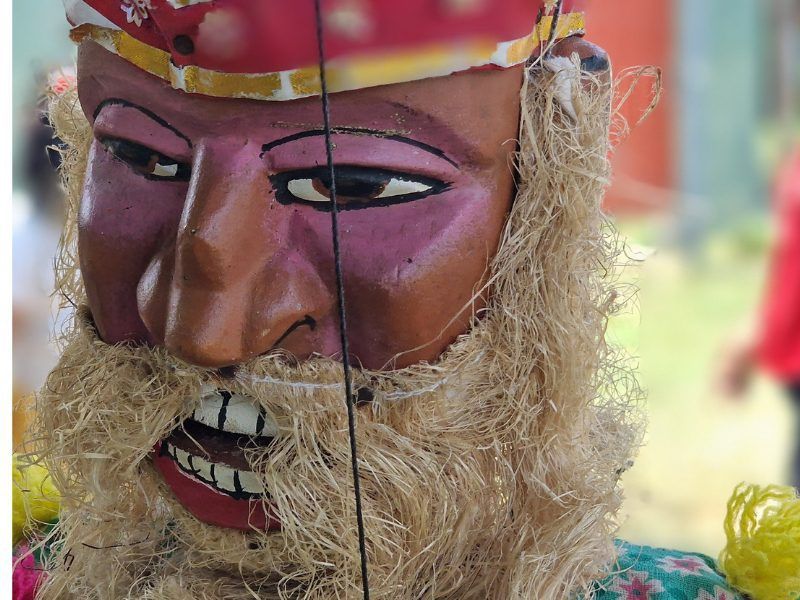
From Colombo, we headed south along the West Coast. The ride is really easy, flat and for some part, you can follow the road next to the railway. We took a nice detour to visit the small island and village inside Maduganga Lake and then back along the sea.
This part of the coast is known for its cultural heritage.
First, we stop to visit the Puppeteers of Lanka, where you can visit the museum and watch a 15-minute puppet show, and even try to maneuver one (not easy…).
After 2.5 km you’ll reach Ambalangoda, famous for its masks artisans. we visited the very nice Ariyapala Masks Museum (ආරියපාල වෙස් මුහුණු කෞතුකාගාරය).
There are many masks shops on the road but this one looked more authentic to us. There are artisans working there, the entrance fee is donation-based, a nice lady showed us around and explained the meaning and the history behind the masks. There is also an attached shop where they sell (and ship abroad) their creations.
Why we avoided the Sea Turtle hatchery business in Sri Lanka
Along this coast, in particular, you will see dozens if not hundreds of so-called “turtle hatcheries and rescue centers”. It would be nice to think it was true but as much as each of us wants to see and interact with sea turtles, an objective look from the outside is enough to understand that it is simply an economic operation at the expense of turtles and tourists.
Googling any of these places and ranking the reviews from the lowest, it’s easy to see that hundreds of them say the same thing. The fishermen sell the eggs to these places, once the turtles are born they are kept in microscopic tanks. Tourists have to pay between 1000 and 2000 rupees to release a baby turtle into the sea, no matter the time of day. Often the staff doesn’t even check that the turtle is really released.
Obviously, we didn’t want to visit any of these places, but despite my intention, I saw the turtles. Along the way, I stopped at a small kiosk to ask to use the bathroom. The caretaker kindly tells me yes, that I could use the one inside the hatchery. I enter, the bathroom is next to the turtle tanks. It is dark, a huge sea turtle is in a tank about 1.5 meters long and one meter high. It just floats there, it has no room to move.
In a tank nearby, of the same size, swim hundreds of newborn turtles, ready to be released at a high price.
Cycling along the coast we saw several sea turtles swimming free in the sea and playing on the crest of the waves. I can’t tell if there are so many because of the hatchery business but it is still much better to have a snorkeler with you and swim with them in the open sea, or just look at them from afar.
Hikkaduwa + Tsunami memorial
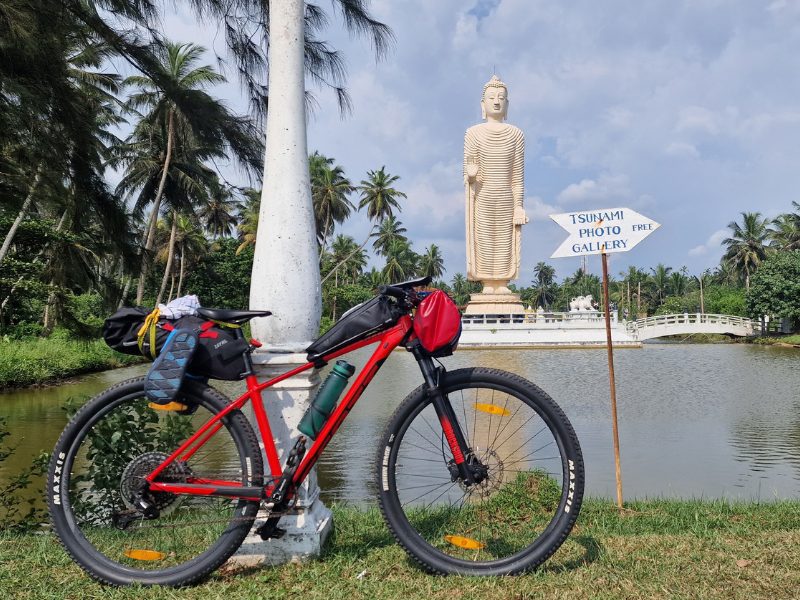
On your way to Galle, you’ll pass through Hikkaduwa, famous among tourists since the 70’s. Unfortunately, uncontrolled development has created an unplanned strip of cheap guest houses racing among each other to be the closest possible to the waves. This has created terrible beach erosion. We can say that basically there is no sand anymore.
The place is known for scuba diving, the season goes from November to April, the same as surfing.
There are a few Tsunami Photo Museums in and around Hikkaduwa, usually based on donations and a memorial (halfway to Ambalangoda) to the 40.000 people who lost their lives in Sri Lanka and to the hundreds of thousands whose lives changed forever.
Galle – Unesco World Heritage
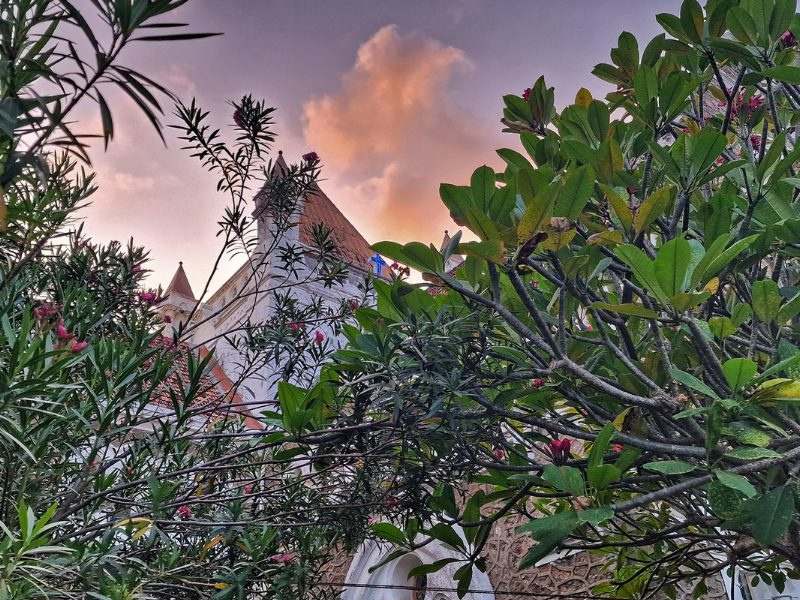
Galle is an unmissable destination in the South of Sri Lanka. A wonderful collection of Dutch Colonial buildings, a really beautiful little town.
The Fort, built in 1663, occupies most of a promontory surrounded on three sides by the ocean, it is a wonderful spot to look at the sunset.
From there you can also see pretty well the cricket stadium.
If you are tired of Kottu and Nasi Goreng visit aqua pizzeria napoletana, rare authentic pizza.
One afternoon is enough to visit Galle, so we decided to sleep outside the town, there are many good deals.
From Galle to Talalla – The South Coast
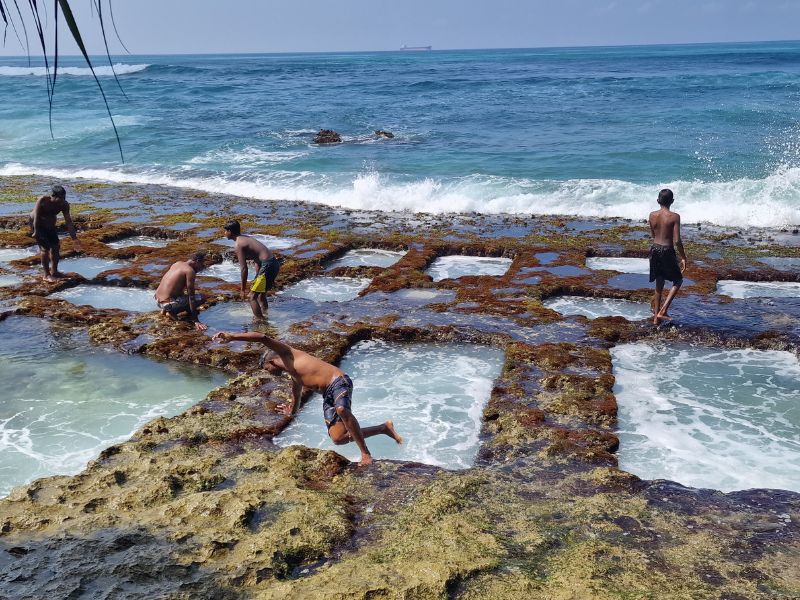
The South Coast after Galle is full of tourist complexes and hotels that basically privatized the beaches. Sometimes you’ll see some small footpath that leads to the beach. Nice stops are Thalpe Beach, where we have seen a few sea turtles swimming there, and Unawatuna, where we had the best coconut of our trip.
Proceeding on the coastal road, you’ll reach Koggala, famous for the stilt fisherman, a traditional style of fishing. Not sure how real they are nowadays.
They will pose for a picture for a tip, bargain before so you’ll have no surprise. We did not do it so we have no clue about the price they ask. If you just look at the sticks a fisherman will run and jump on it, asking you money for the picture.
Mirissa was not our favorite spot, really overdeveloped, we looked around and decided to keep cycling. The location is famous for whale watching, especially blue whales in December and April. We suggest you avoid monsoon season, May to July, when the waters are really rough. Also, check the operators who are serious and respect the guidelines and international conventions about approaching whales
We spent a night in Matara, a busy and booming town, not touristic at all. The beach is not that great but if you want to explore some real Sri Lankan life this is a good way. The town is not so big and you can easily explore it on a bike, or on foot.
Dikwella was our last destination on the Coast before turning into the interior, a small bay, full of surfers but where you can also swim. Many bars on the beach and good vibes, the perfect place to say goodbye to the Ocean for a while.
North + Center Sri Lanka
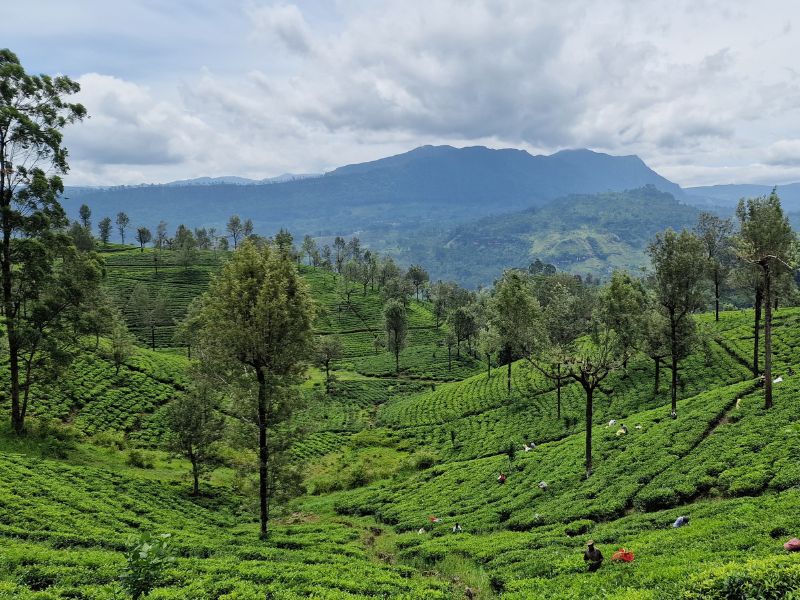
From Dikwella we took a secondary road that about twenty kilometers led us to Mulgigala Raja Maha Viharaya, an ancient Buddhist temple built on a rock at 205 m (673 ft). You can leave the bikes in custody near the bathrooms, there is a small garage where the workers park their scooters. The entrance ticket costs 500 rupees. And of course, there are a lot of stairs, to be avoided in the hottest hours of the day.
From there we proceeded to Urobokka and then to Pallebedda, you can find a place to sleep in both villages. The road is very green and pleasant, leaving trucks and tourists on the coast. There are many waterfalls on the way (search for “Ella” on Google Maps).
Another secondary road to Balangoda (visit the Sri Sudarshanaramaya Temple). Balangoda is a big center, ideal if you need to buy groceries, use the ATM, or just eat something at the restaurant. There is also a bicycle shop on the main road.
From Balangoda we took the road to Bogawantalawa and Norwood. Amazing ride among tea plantation. In this area, there are many Hindu temples and Christian statues. The villages look more poor compared to what we have seen up to now.
Adam’s Peak and Why to Avoid It
Since it was not on our way but it is an iconic place in Sri Lanka, we decided to leave our bikes in Norwood and take a bus to visit Adam’s Peak in a one-day trip. The bus ride was intense but not too long, and the road was very nice, it dropped you at the parking lot before the stairs started.
It was not a full moon or a particular festival but a lot of tourists were there, some already on their way back. Many people climb during the wee hours, see the sunrise and come down. The place is probably nice only if you are there for religious reasons, otherwise, the landscape is nothing special and the climbing is very boring.
It is full of vendors almost until the top, not so clean and we have heard horror stories about climbing during a festival, you can easily get stuck for hours in a mass of people. We honestly would not do it again. There are different paths to reach the top, you might want to try one of the secondary ones.
Kandy – Pelicans, Fruit Bats, and Dance
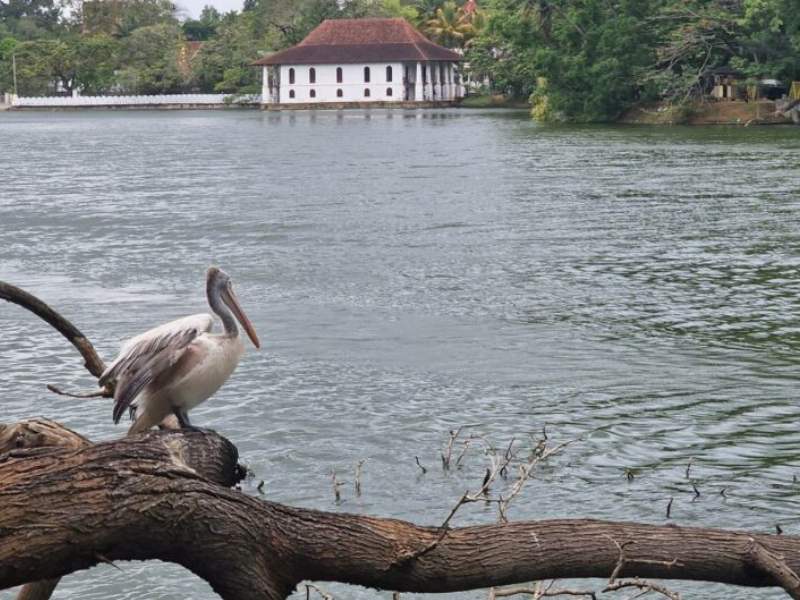
From Hatton you can easily avoid the main road, we took the road passing to Dimbulla Estate and Kadiyanlena Waterfall, super green and has no traffic. Only the last kilometers to Kandy are in the traffic, not much you can do to avoid it.
First, the ugly. Kandy is mostly known for the so-called Temple of the Tooth Relic. Apparently, the sacred tooth of the Buddha was snatched from the flames of the Buddha’s funeral pyre in 483 BC. It ended up in Kandy and for centuries was a symbol of sovereignty, although some say that the tooth is just a replica.
Fast forward to today, what is there for sure is a poor caged elephant, and all places transformed into a huge tourist trap (2000 rupees entrance, only foreigners pay). I guess there is no need to explain why to avoid Buddhist temples with caged elephants held in there, a pretty common practice here.
There are a few nice things about Kandy, our favorite was to walk around the lake, there are hundreds of birds, pelicans, and fruit bats. We also went to see the traditional dance show at the Kandyan Art Association, they perform every day at 5 p.m.
Important note: The official policy is that you cannot wear a hat in religious places but this basically translates into not allowing Muslim women to visit all the “must-see” of the country. They will tell you just need to take off your hijab, and you always discover that after paying for the ticket as we could see with our own eyes.
A nice stop on the way to Dambulla: Nalanda Gedice, the center of Sri Lanka
Built in the style of a South Indian Hindu Temple between the 8th and 10th centuries, the venerable Nalanda Gedige is a nice stop in a beautiful location, next to an artificial lake. It is considered the geographical center of Sri Lanka.
Victoria Reservoir and Randenigala Rantembe Sanctuary
From Kandy, we rented a scooter and went to visit the Victoria Reservoir and Randenigala Rantembe Sanctuary (road B492). We liked the north road better (the A26), but our favorite is the Hunnasgiriya – Meemure road, in the Knuckles Forest Reserve, really beautiful. There are lodges if you wish to sleep in the park.
Dambulla Cave Temple
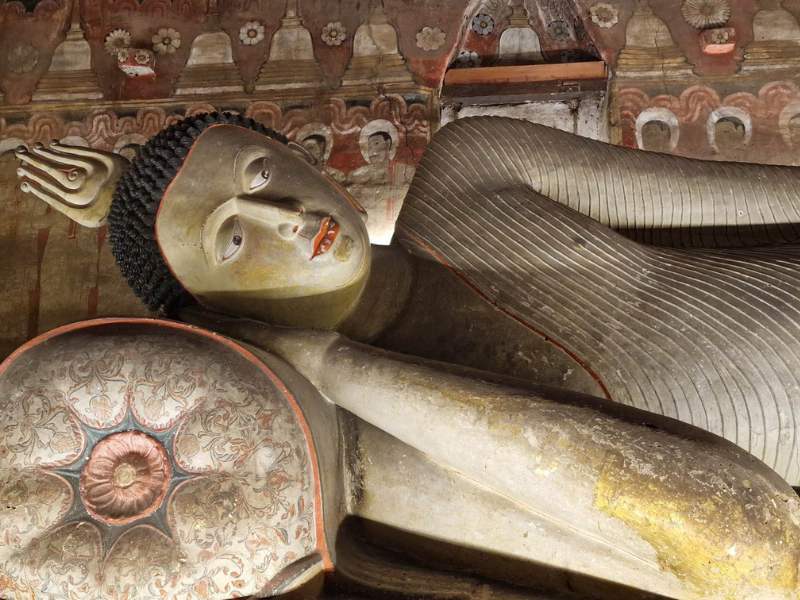
Dambulla town is of no interest, but the Cave temple is iconic, one of the most beautiful things we have seen in Sri Lanka. The Royal Rock Temple complex sits about 160 meters above the road in the southern part of Dambulla. Five separate caves contain about 150 stunning Buddha Statues and paintings, some of which are 2000 years old.
On the way down, do not miss the super kitsch and quite monstrous Golden Temple
Important: there is only one ticket office, you need to buy the ticket before going up the stairs. They do not sell tickets at the temple, you do not want to climb the stairs twice.
The East – Dambulla to Trincomalee and Polonnaruwa
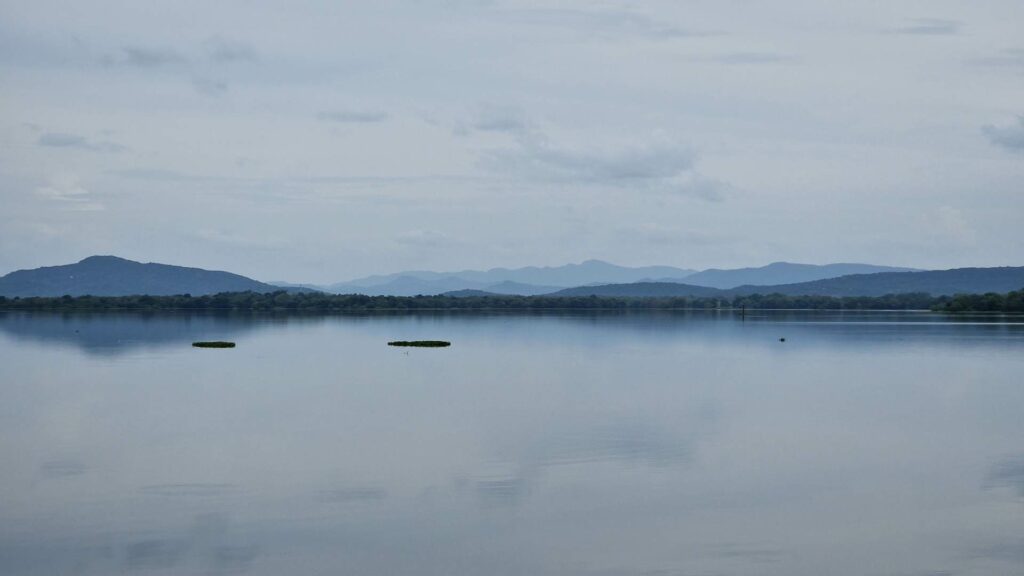
From Dambulla we did a round trip, we took the main road to Trincomalee and came back through Polonnaruwa.
The road to Trincomalee was a surprise, we imagined a fairly busy highway and instead, we found ourselves on a wide asphalt road, quite new and without cars. You pass the border of several national parks, a few villages, and several military settlements. We even encountered an elephant on the way.
Trincomalee
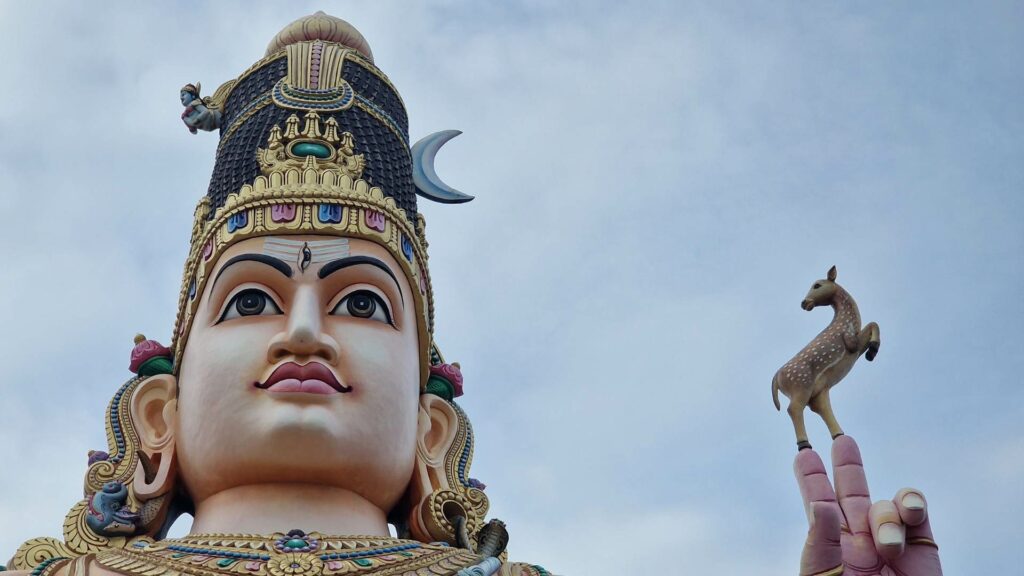
Even Trincomalee surprised us, with very calm and clear water. Not yet very equipped for tourism, but this is fortunate for us. The road that goes to the Shiva temple is home to so many deer. The temple, Kandasamy Kovil, is one of the panchas ishwaram of Sri Lanka, the five historic temples built on the island and dedicated to Shiva with the aim of protecting Sri Lanka from natural disasters and it is also an important location in the Ramayana.
On the East side of the city, Swami Rock has been declared the world’s greatest vantage point for blu whale spotting by oceanographers.
Polonnaruwa and Sigiriya Alternative
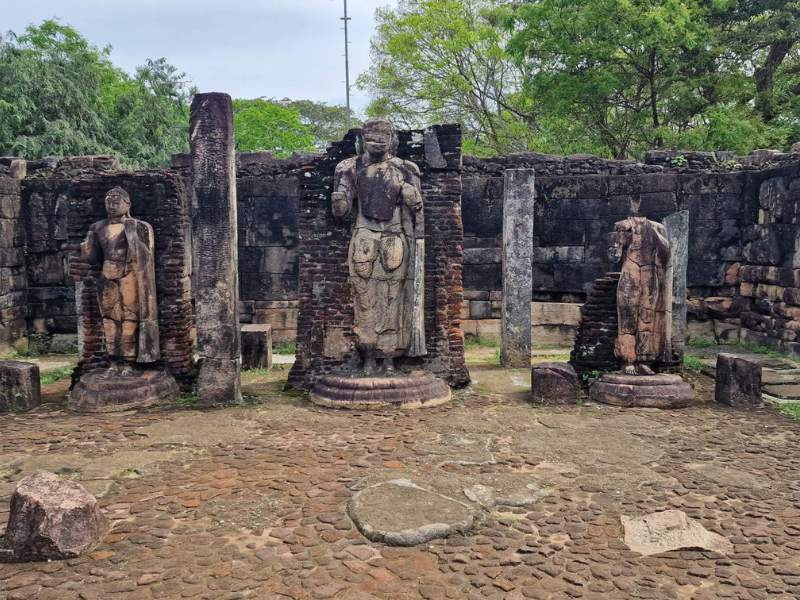
On the way back we took the road to Polonnaruwa to visit the ancient city. It is overpriced (25 USD for foreigners, locals enter for free) and if you have seen other ancient cities in Asia, it is not really impressive.
Still, some of the buildings are very nice, but for most of them, there is not much left and does not look like they are trying to work on conservation. Go in with your bicycle, the walk is long and boring. If it is on your way and it is in your budget, it might be worth a stop.
Sigiriya Alternative: Monuments and temples are quite expensive in Sri Lanka so you might need to select what to see and what to skip. We skipped the Sigiriya site (30 USD) which looks like one of the biggest tourist traps as many locals told us, they also said you can climb another rock nearby, Pidurangala Rock, with no crowd and only 500 rupees (watch out for wasps and snakes).
When you leave Polonnaruwa, if you are going toward Dambulla, take the wonderful road along the Parakrama Samudra (in the picture above), a peaceful water reservoir built around 386 AD. It runs in between the Angammedilla NP and Wasgamuwa NP, and it is totally worth it.
The North West – Kalpitiya
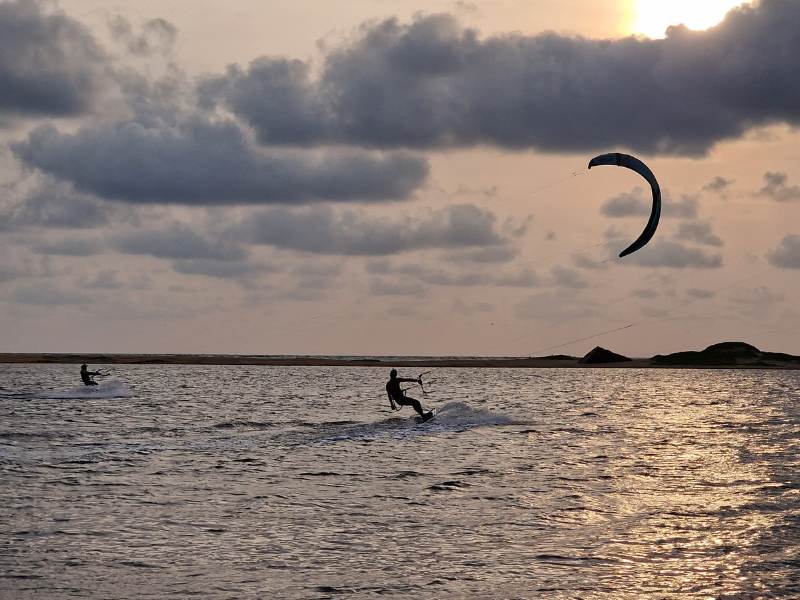
The road that goes north from Colombo along the coast is very busy, and not at all pleasant. As always in Sri Lanka, there are always alternative secondary roads, in which case you will have to walk a few more kilometers but it is worth it if you are not in a hurry.
We headed to the Kalpitiya peninsula as it is one of the few locations in Sri Lanka where kite surfing is done. This area is also famous for the phenomenon of Bioluminescent Plankton. We stayed at the Duotone Pro Center which overlooks the lagoon on the western side of the Peninsula.

